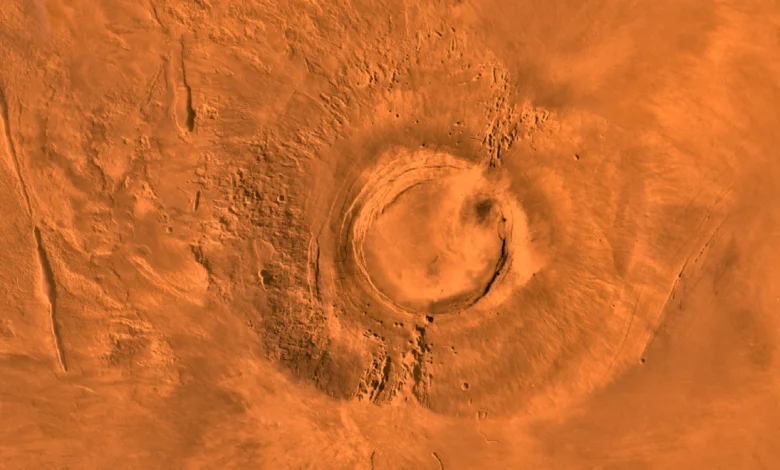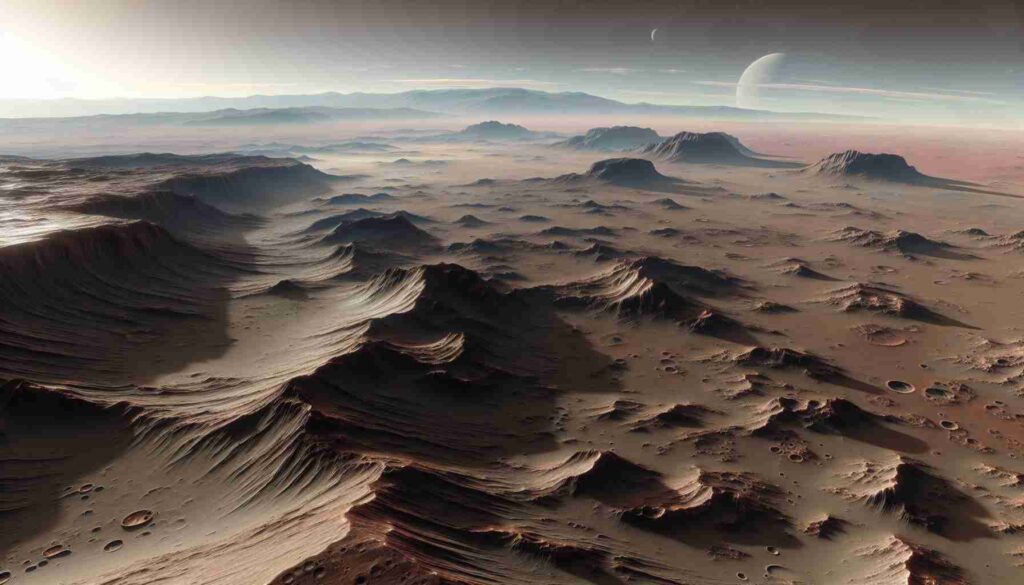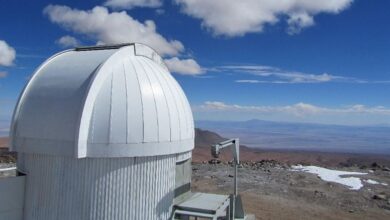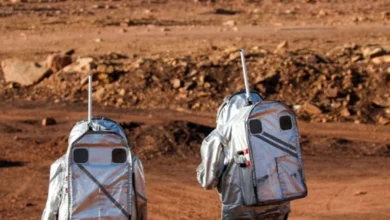Mars region unveils ancient volcanic landscape, potentially impacts search for extraterrestrial life
A team of planetary scientists delved into Mars' geological history, discovering that the Eridania region's landscape responded to ancient crustal transformations

In the quest for extraterrestrial life, scientists analyzing tectonic activity on Mars have uncovered 63 distinct volcanoes, uniquely different from the planet’s highlands. These findings in the Eridania region, shaped by Martian crust changes four billion years ago, may redefine the search for alien life, influencing NASA’s Curiosity and Perseverance rovers.
A team of planetary scientists delved into Mars’ geological history, discovering that the Eridania region’s landscape responded to ancient crustal transformations. The region once hosted the Eridania paleolake, a vast lake system up to a mile deep. Planetary geologist Aster Cowart from the Planetary Science Institute expressed, “Long-lived volcanic sources next to abundant water may have fueled hydrothermal systems that could have nurtured life. At the very least, these findings give us a larger number of places we can look for evidence of life.”
Present-day Mars starkly contrasts Earth, exhibiting minimal volcanic and tectonic activity. Nearly half of Mars’ surface, over 3.5 billion years old, suggests limited crustal recycling on the Red Planet. On Earth, plate tectonics drive crustal recycling as one plate slides under another, recycling surface material into the mantle between the Earth’s crust and molten core.

The research team utilized data from spacecraft orbiting Mars, including the Mars Global Surveyor, Mars Odyssey, and the Mars Reconnaissance Orbiter, to study the mineralogy and morphology of the Eridania region. Aster Cowart explained, “Various attributes of the Eridania region have drawn special attention for a while. Gamma-ray spectroscopy shows this to be a region of the crust with an especially distinctive composition, gravity data has shown it to be generally less dense and thicker than the rest of the Martian crust, and magnetic data shows it to be an intensely magnetized crust.”
These revelations open new avenues for investigating potential sites of ancient Martian life. The combination of long-lasting volcanic activity and water presence in the Eridania region hints at the possibility of hydrothermal systems, providing environments conducive to life. The findings contribute valuable insights to ongoing missions, as NASA’s rovers explore the Martian surface.
As humanity continues to explore the cosmos, understanding Mars’ geological past becomes crucial in deciphering the planet’s potential habitability and the existence of extraterrestrial life. The ancient volcanic landscape uncovered in the Eridania region expands the scope of exploration and underscores the significance of interdisciplinary research in unraveling the mysteries of our neighboring Red Planet.
You might also be interested in – Massive amount of water ice discovered on Mars



